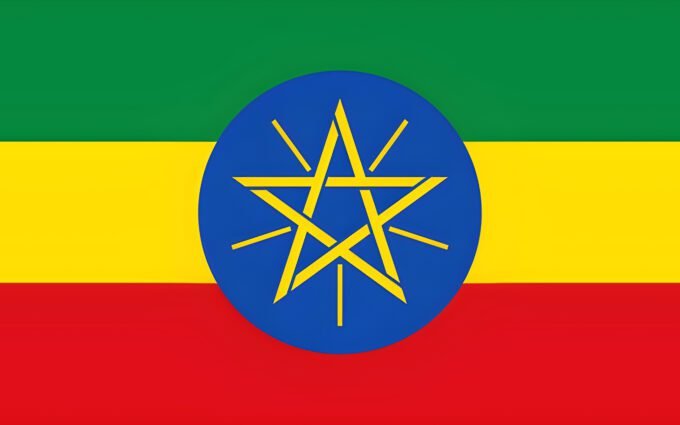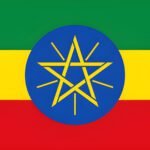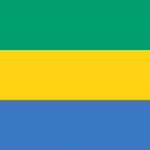Ethiopia Flag: National Flag of Ethiopia Free Download

Introducing the National Flag of Ethiopia: Symbolizing Unity and Pride
Ethiopia, a land of rich history and diverse culture, is proudly represented by its national flag. The Ethiopian flag is a powerful symbol that reflects the country’s values, aspirations, and unity. In this blog post, we will explore the significance of the Ethiopian flag, its design, and the meaning behind its colors. Additionally, we will provide you with information on how to download the national flag of Ethiopia for free.
A) What is Ethiopia famous for?
Ethiopia is famous for its rich history, diverse culture, and stunning landscapes. Here are some of the things that Ethiopia is known for:
- Historical Sites: Ethiopia is home to several ancient and UNESCO World Heritage Sites, including the rock-hewn churches of Lalibela, the ancient city of Aksum, and the castles of Gondar.
- Coffee: Ethiopia is often referred to as the birthplace of coffee. The country has a long-standing coffee culture, and Ethiopian coffee is highly regarded for its unique flavors and aromas.
- Lucy: Ethiopia is the site of one of the most important archaeological discoveries in history. In 1974, the fossilized remains of a 3.2 million-year-old hominin, known as Lucy, were found in the Afar region of Ethiopia.
- Cultural Heritage: Ethiopia has a rich cultural heritage, with diverse traditions, music, and dance. The country is also known for its vibrant festivals, such as Timkat and Meskel.
- Natural Beauty: From the stunning Simien Mountains to the otherworldly landscapes of the Danakil Depression, Ethiopia is blessed with breathtaking natural beauty.
1. What is the flag of Niger?
The flag of Niger consists of three horizontal bands of orange, white, and green, with an orange circle in the center. The orange band represents the Sahara Desert, which covers much of Niger’s territory. The white band symbolizes purity and innocence, while the green band represents the fertile lands of the country.
2. What is the flag of Ghana?
The flag of Ghana consists of three horizontal bands of red, gold, and green, with a black star in the center. The red represents the bloodshed during the country’s struggle for independence, while the gold symbolizes the mineral wealth of Ghana. The green band represents the rich forests and natural resources, and the black star represents African emancipation and unity.
3. Who named Nigeria?
The name “Nigeria” was coined by British journalist Flora Shaw, who later became the wife of Lord Frederick Lugard, a British colonial administrator. Shaw suggested the name in the late 19th century, drawing inspiration from the Niger River, which flows through the country.
4. What is the biggest Nigerian flag?
The biggest Nigerian flag is located at the National Stadium in Abuja, the capital city of Nigeria. It is an enormous flag measuring 20 by 10 meters and is hoisted on a 50-meter flagpole. This iconic flag serves as a symbol of national pride and unity.
5. What country is II?
I’m sorry, but I couldn’t find any information about a country named “II.” It is possible that there may be a typo or error in the reference to this country. Could you please provide more information or clarify the name?
6. What is the flag of Benin?
The flag of Benin consists of two horizontal bands of yellow and red, with a green vertical band on the hoist side. The yellow band represents the country’s wealth and natural resources, while the red symbolizes courage and determination. The green band represents hope and revival.
7. What is the flag of Egypt?
The flag of Egypt consists of three horizontal bands of red, white, and black, with the national emblem, the Eagle of Saladin, centered in the white band. The red band represents the period of revolution and struggle, the white band symbolizes purity and peace, and the black band represents the end of oppression and colonialism.
8. What is the flag of Zimbabwe?
The flag of Zimbabwe consists of seven horizontal bands of green, gold, red, black, red, gold, and green, with a white triangle on the hoist side. The green bands represent the country’s agricultural wealth, the gold bands symbolize mineral wealth, the red bands represent the bloodshed during the fight for independence, the black band represents the African majority, and the white triangle represents peace.
9. What flag is Uganda?
The flag of Uganda consists of six horizontal bands of black, yellow, and red, with a white circle in the center. The black band represents the African people, the yellow band symbolizes the abundant sunshine in Uganda, and the red band represents the brotherhood and resilience of the people. The white circle represents the purity and integrity of the country.
10. Which flag is Turkey?
The flag of Turkey, also known as the Turkish flag, consists of a red background with a white star and crescent in the center. The red color represents the valor and sacrifice of the Turkish people, while the star and crescent are traditional symbols of Islam and represent the country’s historical and cultural heritage.
11. What is the flag of Brazil?
The flag of Brazil consists of a green field with a large yellow diamond in the center, inside of which is a blue circle with 27 white five-pointed stars. The green represents the lush forests of Brazil, the yellow diamond symbolizes wealth and resources, the blue circle represents the sky, and the stars represent the 26 states of Brazil and the Federal District.
12. What is the flag for Kenya?
The flag of Kenya consists of three horizontal bands of black, red, and green, with two white stripes separating them. In the center of the flag is a red, white, and black Maasai shield and spears. The black band represents the people of Kenya, the red band symbolizes the bloodshed during the fight for independence, the green band represents the country’s natural resources and agricultural wealth, and the white stripes represent peace.
13. What is the flag of Tanzania?
The flag of Tanzania consists of two horizontal bands of green and blue, with a black diagonal band from the bottom left to the top right. In the upper hoist-side corner, there is a yellow-edged black triangle containing a yellow, five-pointed star. The green band represents the agricultural resources of Tanzania, the blue band symbolizes the Indian Ocean and other water bodies, the black band represents the African people, and the yellow-edged black triangle and star represent the mineral wealth of the country.
B) Is Ethiopia Rich or Poor?
Ethiopia is considered to be one of the poorest countries in the world. Despite recent economic growth, a significant portion of the population still lives in poverty. The country faces numerous challenges such as high unemployment rates, limited access to education and healthcare, and inadequate infrastructure.
1. What Does the Flag of Ethiopia Mean?
The flag of Ethiopia consists of three horizontal stripes of green, yellow, and red, with the national emblem in the center. The green represents the fertility of the land, the yellow symbolizes peace and harmony, and the red represents the courage and sacrifice of the people.
2. What is Africa’s Oldest Country?
Ethiopia is widely recognized as one of the oldest countries in Africa. It has a rich history that dates back thousands of years, with evidence of ancient civilizations and kingdoms. The country’s historical significance and cultural heritage make it a unique and important part of Africa’s history.
3. What is Ethiopia’s Nickname?
Ethiopia is often referred to as the “Land of Origins” or the “Cradle of Humanity.” This nickname reflects the country’s historical and cultural significance, as it is believed to be one of the earliest inhabited regions and the birthplace of ancient civilizations.
4. Is English Spoken in Ethiopia?
Yes, English is widely spoken in Ethiopia. It is one of the country’s official languages, along with Amharic. English is commonly used in business, education, and government sectors, making it relatively easy for English-speaking visitors to communicate and navigate their way around the country.
5. Which is Older, Ethiopia or Egypt?
Egypt is generally considered to be older than Ethiopia in terms of civilization. Ancient Egyptian civilization dates back to around 3100 BCE, while Ethiopia’s history can be traced back to ancient times as well, but it is believed to have developed as a distinct civilization later than Egypt.
6. What Was Ethiopia Called in the Bible?
In the Bible, Ethiopia was referred to as “Cush.” The term Cush is mentioned several times in the Old Testament, and it is believed to refer to the region that includes modern-day Ethiopia and Sudan.
7. Who Founded Ethiopia?
The founding of Ethiopia is rooted in ancient history and mythology. According to Ethiopian legends, the country was founded by Menelik I, the son of King Solomon of Israel and the Queen of Sheba. This story has been passed down through generations and is an important part of Ethiopian culture and identity.
8. How Do You Say Hello in Ethiopia?
In Ethiopia, the most common way to say hello is “Selam” or “Salam.” This greeting is used in both formal and informal settings and is accompanied by a warm smile and a handshake.
9. What Should I Wear in Ethiopia?
When visiting Ethiopia, it is advisable to dress modestly and respect the local customs and traditions. In general, both men and women should avoid wearing revealing or tight-fitting clothing. It is also recommended to dress in layers, as the weather can vary depending on the region and time of year. Additionally, it is customary to remove your shoes when entering someone’s home or a place of worship.
C) Why was the lion removed from the Ethiopian flag?
The lion was removed from the Ethiopian flag in 1974 when the country underwent a political revolution. The revolution led to the overthrow of Emperor Haile Selassie, who had been in power since 1930. The lion had been a symbol of the Ethiopian monarchy, and its removal from the flag was seen as a significant change in the country’s political landscape. The new flag that was adopted after the revolution featured a plain green background with a yellow emblem in the center, which represented Ethiopia’s diverse ethnic groups.
1. Who colonized Ethiopia?
Ethiopia is one of the few African countries that was never fully colonized by a European power. Although Italy attempted to colonize Ethiopia in the late 19th and early 20th centuries, Ethiopia successfully resisted Italian colonization during the First Italo-Ethiopian War (1895-1896) and the Second Italo-Ethiopian War (1935-1936). The victory in the Second Italo-Ethiopian War made Ethiopia a symbol of African resistance against colonialism and inspired other African nations in their fight for independence.
2. Is Ethiopia safe to travel?
Ethiopia is generally considered safe for travel, but like any other destination, it is important to take certain precautions and stay informed about the current situation. The country has a diverse landscape, rich history, and vibrant culture, making it a popular destination for tourists. However, it is advisable to check the latest travel advisories from your government and consult with a reputable travel agency or guide before planning your trip. It is also recommended to take necessary precautions such as avoiding isolated areas, practicing good personal safety measures, and being aware of your surroundings.
3. Is Ethiopia a big country?
Yes, Ethiopia is a large country in terms of both land area and population. With an area of approximately 1.1 million square kilometers, it is the 27th largest country in the world. In terms of population, Ethiopia is the second-most populous country in Africa, with over 110 million people. The country’s size and population contribute to its cultural diversity, with more than 80 different ethnic groups and numerous languages spoken throughout the country.
4. Do I need a visa to go to Ethiopia?
Yes, most visitors to Ethiopia require a visa to enter the country. However, the specific visa requirements vary depending on the nationality of the traveler. It is advisable to check with the nearest Ethiopian embassy or consulate or visit the official website of the Ethiopian Immigration and Nationality Affairs Office for the most up-to-date information on visa requirements. In some cases, visas can be obtained upon arrival at certain airports in Ethiopia, but it is recommended to obtain a visa in advance to avoid any potential complications.
5. Is it expensive to travel to Ethiopia?
The cost of traveling to Ethiopia can vary depending on various factors such as the duration of your stay, accommodation choices, transportation options, and the activities you plan to engage in. Generally, Ethiopia is considered to be a relatively affordable destination compared to some other African countries. Accommodation and food can be reasonably priced, especially if you choose to stay in budget accommodations and eat at local restaurants. However, certain tourist attractions and activities may have higher entrance fees or costs associated with them. It is advisable to plan your budget accordingly and research the average prices for the specific activities and locations you are interested in.
6. Can I go to Canada with an Ethiopian passport?
Yes, it is possible to travel to Canada with an Ethiopian passport. However, Ethiopian citizens are required to obtain a visa before traveling to Canada. The specific visa requirements and application process can be found on the official website of the Government of Canada or by contacting the nearest Canadian embassy or consulate in Ethiopia. It is important to note that visa requirements and processes can change, so it is recommended to check the latest information before making any travel arrangements.
7. Is Ethiopia bigger than Nigeria?
No, Ethiopia is not bigger than Nigeria in terms of land area. Nigeria is the largest country in Africa by land area, covering approximately 923,768 square kilometers. In comparison, Ethiopia has an area of approximately 1.1 million square kilometers, making it slightly larger than Nigeria. However, both countries are significant in terms of population and have diverse cultures and landscapes.
8. What religion is Ethiopia?
Ethiopia is a predominantly Christian country, with Christianity being the largest religion practiced by the majority of the population. The Ethiopian Orthodox Tewahedo Church is the largest Christian denomination in the country and has a strong influence on Ethiopian culture and society. Additionally, Islam is also practiced by a significant portion of the population, particularly in certain regions of the country. Other religions such as traditional indigenous beliefs and Judaism also have followers in Ethiopia.
9. What is the average salary in Ethiopia?
The average salary in Ethiopia varies depending on various factors such as the industry, level of education, and location. However, it is important to note that Ethiopia is a developing country with a significant portion of the population engaged in subsistence agriculture and informal employment. As a result, average salaries in Ethiopia tend to be lower compared to developed countries. According to available data, the average monthly salary in Ethiopia is around $150 to $200 USD. However, it is important to consider the cost of living in Ethiopia, which can be relatively lower compared to some other countries.
Conclusion
The national flag of Ethiopia is a powerful symbol that represents the country’s unity, pride, and aspirations. Its design and colors hold deep historical and cultural significance, reflecting the values and struggles of the Ethiopian people. By understanding the meaning behind the Ethiopian flag and displaying it with pride, we can honor Ethiopia’s rich heritage and contribute to a more inclusive and harmonious society.
Categories : Ethiopia
Views : 57 Views
Downloads : 0
Tags : Ethiopia Flag
Author : Admin
Description : Download Ethiopia Flag: National Flag of Ethiopia Free Download HD Widescreen Flag from the above resolutions from the directory Ethiopia. Posted by admin on April 29, 2024 If you don’t find the exact resolution you are looking for, then go for Original or higher resolution which may fits perfect to your desktop.
Rate This Flag:Download Flag
HD Resolution : 1280x720 1366x768 1600x900 1920x1080 2560x1440
Mobile VGA : 240x320 480x640 320x240 640x480 Mobile iPhone : 960x640 1136x640 1134x750 2208x1242
Tablet Android/iPad : 1024x768 1280x1280




Comments